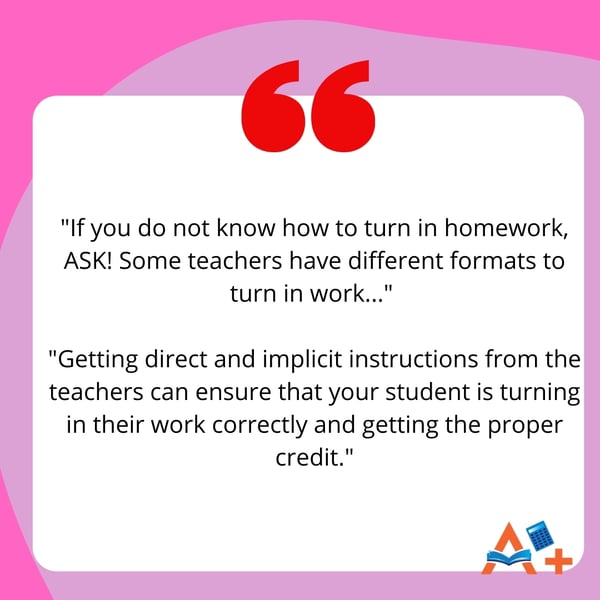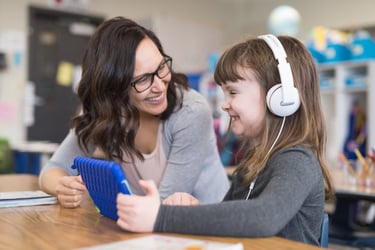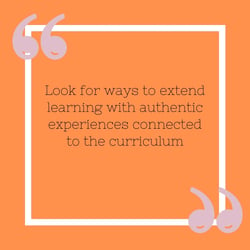10 tips for Distance Learning from a Teacher
Distance learning, or learning online typically through programs such as Zoom, has become the new way of learning during this pandemic. It sprung up unexpectedly, giving everyone no time to prepare. Now that first semester has ended, it is a good time to use knowledge to improve second semester and help you kids succeed.
-
Students need a space to learn.
Many of my students have been doing their schooling sitting in their bed, which has led to students not paying attention, and in one instance, falling asleep during class! At school, students have a desk to sit in and use to put their notebooks to write and take notes. Without a space like this, students get too comfortable and have a harder time focusing. Just like adults who have desks, cubicles, or even just a separate space to work, kids need this too. Check out this other article on workspace environment.
Something as simple as setting up a small table and chair, even in the bedroom, can make a WORLD of a difference. Students are more attentive and have more space to work. It also helps to keep all their school supplies organized, which makes learning easier. Without a space to feel like school, students will not treat it as school.
-
Pajamas aren’t bad to wear… just don’t wear the ones you slept in.
You can’t blame students for wanting to be comfortable, especially at home. Most of the reason students get dressed is because they are going out, seeing friends, and wanting to be stylish. But at home, they do not need to impress anyone. Even I want to be comfortable when I teach, so I would wear my professional work shirts and a pair of comfy pants that I wouldn’t typically wear to school.
This actually helps! Students who aren't uncomfortable learn better. However, rolling out of bed and onto the computer just encourages laziness and a lack of care in school. When students have a routine, such as “get up, brush teeth, change into new clothes…” it helps them follow the routine they had during in person school. As long as clothes are school appropriate, getting out of bed and putting on a new pair of comfy clothes really helps encourage students to be more prepared for learning. Of course, wearing normal clothes is just as good! It is about the mental preparation and dedication.
-
Just like kids need a break from school, they need a break from the screen.
Students tend to go from a day of online classes to an afternoon of youtube, TikTok, video games, etc. We trade one screen for another. This causes eye fatigue, and makes looking at screens even harder. Of course, kids are more likely to choose to pay attention to their fun activities and push school to the side.
Many students turn off their cameras, which means that teachers do not get the engagement with the students that would happen in person. Teachers do not know if students are there and paying attention. I have had experiences with students muting the computer entirely and thus not responding even when called on, which makes it obvious that they are not here to learn but rather to be marked “present.” This is the easiest way for students to fall behind. By making your child take a screen break, it will help relieve the eye strain and make watching the teacher and paying attention easier.
-
Check your child’s grades.
The biggest problem I have experienced is parents angrily messaging once they receive a progress report, as they did not realize their child was getting Ds and Fs, missing so much work, and not participating in class. Most, if not all, schools have learning management systems that allow you and your child to check their grades every day in real time. It shows what they get on each assignment, what they are missing, and typically comments from the teacher. A+ Tutoring provides a school audit service where they go in on your behalf and summarize everything and create a plan of action
Students have a hard time being responsible for all of their own work, which exists both in person school and distance learning. However, with distance learning, most students turn in and receive everything online, which can make it easy for students to fake. Many parents have messaged me angry that they did not realize their child was so far being, making it very hard to catch up. They do not look at how their child does on a test, if the kid turned in their homework, and if they are actually participating in any capacity. Checking your child’s grades can completely eliminate this issue, since you can see missing work and make sure they stay on top of it all.
-
Ask the teacher first.
One of the biggest issues with distance learning is that parents do not know what the teacher expects. While teachers frequently communicate this to their students, most of that information does not get passed along. If you ever have any confusion or just want to check in, reach out to the teacher! Teachers are flooded with work… that is actually made harder when students do not do their work. We WANT your child to do their work. We WANT your child to succeed.
If you do not know how to turn in homework, ASK. Some teachers have different formats to turn in work. Many have different times that the homework is due. Some set it to 11:59pm, others have it at 8:59am before class starts. The learning management system also shows when homework is due. Getting direct and implicit instructions from the teachers can ensure that your student is turning in their work correctly and getting the proper credit.

-
Look into investing in blue light glasses.
I bought blue light glasses for myself last year, as I use my iPad to teach and project math on the board. This ended up being great, as the iPad also works with distance learning! Here is a link to a pair of kid friendly blue light glasses on amazon. This helps me reduce the eye strain as well, and many of my students have gotten blue light glasses for themselves. They sell blue light glasses for cheap online, and it can make a world of a difference.
Any sort of way to make looking at a screen for hours at a time will help drastically. I turn my brightness down where I can see clearly but it does not hurt my eyes. I have my computer at a good angle to keep my posture straight. I make sure that I have my computer plugged in and all my supplies ready, so I do not have to go find my book or glasses or a pen and paper. Too much screen fatigue can cause REAL fatigue and make coming to class every day a chore rather than a learning opportunity.
-
Check in with your child.
Many times, students are too shy to ask their teacher a question. By checking in with your child, they are more likely to tell you what they are having issues with, and either you can help or reach out to the teacher for help. You can see where they are having issues and help them overcome them! Check out this A+ Tutoring blog post about engaging with your child.
Issues might not just be related to not understanding class. Many students are experiencing loneliness, anxiety, fatigue, and are not used to this kind of environment. Since this was sprung upon everyone, no one had time to prepare and work up the plans to keep them in check. Having daily check ins, asking if they have done their work, how they are feeling, and talking about ways to help keep them relaxed (such as breathing exercises) will truly help your child succeed, both during distance learning and in real life!
-
Plan family time.
With distance learning, loneliness is inevitable. Especially for students switching schools, students who do not know anyone, and students who are shy. Everyone needs interaction to succeed. It has been studied that social contact can help everyone cope with major changes in life, one being this pandemic. Human contact is important for both mental and physical health, and by planning family time, it helps students get the interaction they desperately need.
Just like checking in with your child, simply spending some good ol’ family time together will make a big difference. It can be as easy as a card game, telling stories, playing outdoors, going on walks, etc. Building connections is necessary for humans, and without it, students will not have the ability to succeed. While they got the interaction from in person school, we now need to find ways to fill those gaps.
-
Be involved as much as you can.
It seems that a lot of parents are just now realizing they have to be involved in their child’s schooling. Most of the assumptions made were that the teacher handled everything, but teachers only have control during class time. When children go home, it is up to the parent. Many parents work long hours, especially essential workers. This makes it hard for parents to stay on top of everything, but by being as involved as much as possible, it helps everyone stay on the same page.
When kids see their parents being involved, it encourages THEM to be more involved as well. Kids follow by example, and there is no better example than family. Helping with homework can be something as simple as sitting there with the student and encouraging them to come up with a solution. If a student can explain a topic, it means they TRULY understand it. Watching online videos of the system teachers use to submit homework can help explain it to your kids. Finding other resources, such as online tutoring for free with the Los Angeles Public Library, can help kids who are struggling and falling behind.
-
Understand that kids need a break too --- but that does not mean avoiding responsibilities.
Just like adults, students can get worn out with the heavy workload they are getting. Remembering what classes to go to and when, balancing all the homework, having to be responsible for themselves without the teacher fully being able to make them pay attention… students can wear themselves out quickly. Students need fun activities, but planning when and what is the most important. One great way is to have students complete their homework before going online. This ensures they get their work done, and still allows for freetime.
This also helps encourage students to be able to be successful in the future as they progress through the years of school and eventually jobs. Planning a schedule with time to do work and time to have fun will help your child maintain an even balance between learning and life.
The most important thing to remember is that YOU are involved in the process. That you try as hard as you can so your child tries as hard as they can. Remember, teachers are here to help. Everyone wants the children to succeed, and everyone needs to be on the same team.
Ms. Diaz is an experienced educator who currently teaches 6th grade math and science at an LAUSD middle school.
.jpg?width=110&height=79&name=Hi-Res%20Logo%20%20(320%20%C3%97%20230%20px).jpg)
.jpg?width=145&height=104&name=Hi-Res%20Logo%20%20(320%20%C3%97%20230%20px).jpg)



